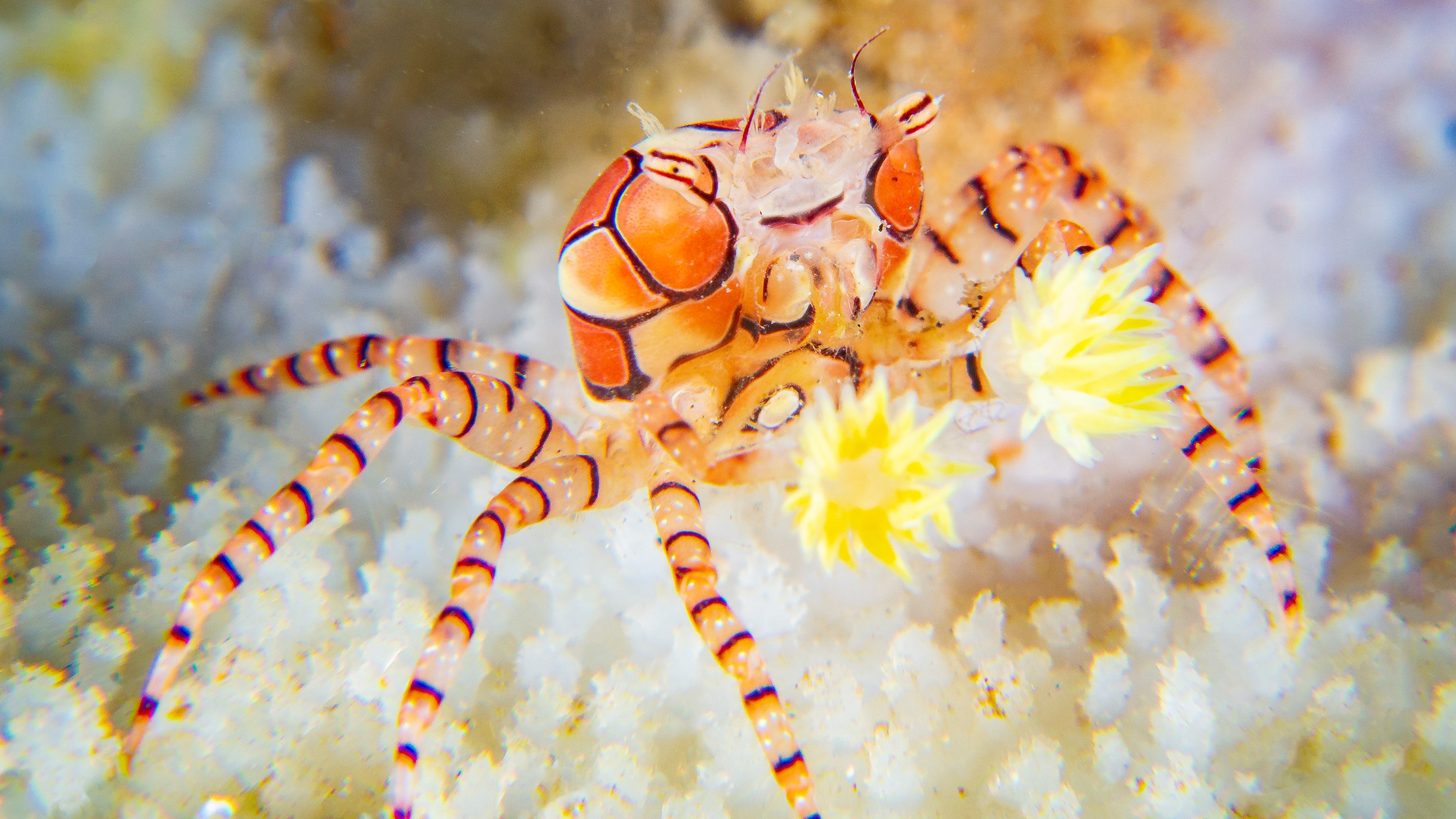Pom pom crab: The crustacean that uses anemones as boxing gloves
These tiny crustaceans, also known as boxer crabs, use the venomous anenomes to protect themselves from predators and to eat with. They also wave them around while fighting with each other.
Name: Hawaiian boxer crab or pom pom crab (Lybia edmondsoni)
Where it lives: The Hawaiian Islands
What it eats: Shrimp, squid
Why it's awesome: The pom pom crab grows to only around half an inch (13 millimeters) wide, and its soft exoskeleton means its armor is pretty useless. Yet despite its minuscule size, this pugnacious little crustacean likes to fight and eat while clutching dangerous weapons — sea anemones.
The pom pom crabs, also known as Hawaiian boxer crabs, carry tiny sea anemones in each claw and use them to spar with competitors. This anemone species, Triactis producta, is venomous — and the crabs wave the anemones around as a way of defending against predators and catching food.
But they also carry them during mini battles with each other.
In a study of the behavior published in 1997, researchers selected 12 pairs of crabs — six males and six females — and pitted them against each other in a tiny crustacean gladiator arena. The winner was the crab that retreated or fled the least.
Get the world’s most fascinating discoveries delivered straight to your inbox.
Related: Why do animals keep evolving into crabs?
The videos showed that the crabs used the anemones more for show than for contact. When the anemones did touch opponents, it appeared to be by accident. So why bother wielding these anemones?
The researchers had lots of ideas, but there was little consensus. There were several proposed (and contradictory) hypotheses. One was that the anemones are so toxic to the crabs that they're too risky to use as weapons — their use could result in severe harm to both fighters.
On the flip side, they may actually be nontoxic to the crabs, so there's not much point to using them.
Finally, the anemones may be so valuable that it wouldn't be worth it for the crabs to risk damaging the anemones. They do know the crabs use the anemones to collect food particles and eat from them. When they lose one of the anemones, the crabs split the remaining one in two, so it always has one in each claw.
Scientists are still sorting out why the boxer crabs cling to the sea anemones. What the anemone gets out of it is still unknown.

Hannah Osborne is the planet Earth and animals editor at Live Science. Prior to Live Science, she worked for several years at Newsweek as the science editor. Before this she was science editor at International Business Times U.K. Hannah holds a master's in journalism from Goldsmith's, University of London.



